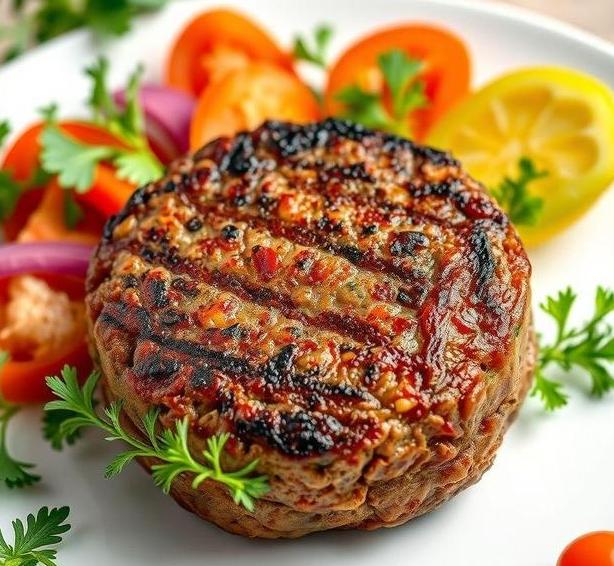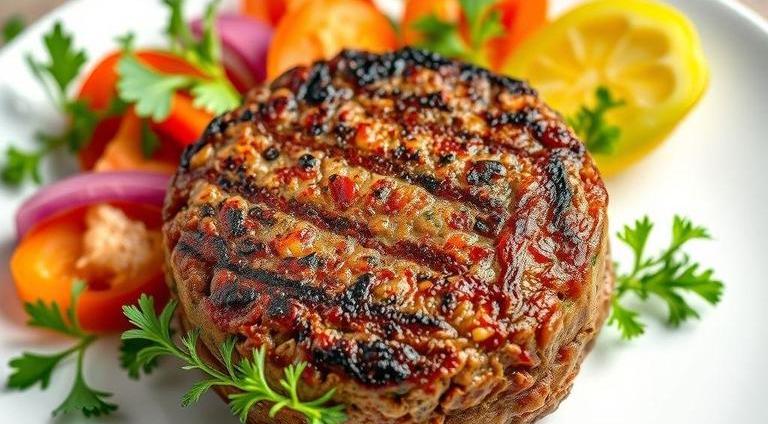Impossible Meat, a popular plant-based alternative to traditional meat, has taken the world by storm. With its convincing taste and texture, it has quickly become a go-to for vegetarians, vegans, and those simply looking to reduce their meat consumption. But, just like any perishable food item, you might find yourself wondering-can Impossible Meat go bad?
It’s a great question, especially considering that we often see products labeled as "plant-based" and think they can last longer than their animal-based counterparts. While it’s true that some plant-based products have longer shelf lives than meat, Impossible Meat is still a perishable item. It needs proper care and attention when it comes to storage, handling, and consumption.
In this guide, we’re diving deep into the shelf life of Impossible Meat, how to tell if it’s gone bad, and the best ways to keep it fresh. If you’ve ever wondered whether you can stretch the life of that pack in your fridge or freezer, keep reading for some expert advice!
Can Impossible Meat Go Bad?
Yes, Impossible Meat can absolutely go bad, just like any other food product, and there are a few factors that can contribute to its spoilage. Though it’s made from plants, the meatless version of beef is still a highly processed food item that contains a mix of ingredients like soy protein, potato protein, coconut oil, and flavorings designed to mimic beef. As such, it shares many of the same risks as any other perishable food when it comes to spoilage, including the potential for bacterial growth, discoloration, and off smells.
The key here is recognizing that while Impossible Meat does not contain the same levels of preservatives as packaged animal-based meat, it’s still packed with proteins, fats, and moisture-making it a prime environment for bacteria or mold if stored improperly or kept for too long. Plus, there are many ways to detect spoilage, so you don’t have to rely on guessing if it’s still safe to eat.
So, how long can it last, and when does it go bad? Let’s dig into that in the next section.
Shelf Life For Impossible Meat

When it comes to the shelf life of Impossible Meat, there are two important things to keep in mind:
-
Before Opening
- Refrigerated: When you buy Impossible Meat, it typically comes with a “best by” date on the packaging. This is the manufacturer’s recommendation for optimal freshness. Typically, refrigerated Impossible Meat can last up to 10 days past the date printed on the package, provided it is kept properly chilled at 36-40°F (2-4°C). However, always check for any abnormalities like bulging or compromised packaging, which can indicate contamination.
- Frozen: If you plan to freeze Impossible Meat, it can stay fresh for up to 6 months in the freezer. Freezing doesn’t spoil the product, but the texture and taste might be slightly altered after thawing.
-
After Opening
Once you’ve opened a package, the shelf life shortens significantly. The general recommendation is that opened Impossible Meat should be consumed within 3-5 days if refrigerated. If you’re not using it all at once, it’s best to portion it out into smaller servings and keep it in an airtight container to limit exposure to air.
Common Signs Of Spoilage
It’s important to know what to look for when checking whether your Impossible Meat has gone bad. Below are the most common signs of spoilage that you should be aware of:
- Off-Smell: One of the easiest ways to spot spoiled Impossible Meat is by its smell. Fresh Impossible Meat should have a neutral, slightly savory scent. If it smells sour, rancid, or rotten, it’s time to toss it.
- Discoloration: Normally, Impossible Meat is a reddish-brown color (similar to raw beef). If the meat starts turning grey or has unusual dark spots, it’s likely that bacteria or mold have started growing.
- Slimy or Sticky Texture: If your Impossible Meat feels slimy or sticky when you handle it, that’s a clear sign it’s starting to spoil. This can happen when bacteria begin breaking down the proteins, which produces a slippery texture.
- Mold Growth: Though mold on Impossible Meat is not as common as other spoilage signs, it can happen, especially if the product has been stored improperly or for too long. If you see mold, discard the meat immediately.
- Excessive Dryness or Crumbling: While not necessarily a health risk, if your Impossible Meat becomes dry and crumbly after a long time in the fridge, it’s an indication it’s past its prime and won’t offer the best taste or texture.
How To Store Impossible Meat?

Proper storage is key to maximizing the shelf life of Impossible Meat and ensuring you’re not consuming anything past its safe point. Here are some foolproof tips on how to store it:
-
Refrigeration
- Keep your unopened Impossible Meat in the coldest part of the fridge (usually towards the back). Always store it at a consistent temperature of 36-40°F (2-4°C).
- Once opened, transfer the unused meat into an airtight container or tightly seal it in plastic wrap to limit exposure to air. This prevents the meat from drying out and helps maintain its freshness for a longer time.
-
Freezing
- Freezing is a great way to extend the life of Impossible Meat, but you’ll want to freeze it in an airtight container or vacuum-sealed bag to prevent freezer burn.
- If you’ve opened the package and have leftover Impossible Meat, it’s perfectly fine to freeze the remainder, as long as you wrap it well. Once frozen, it’s best used within 6 months for optimal quality, though it will still be safe to eat after longer periods.
-
Avoid Contamination
- If you’ve cooked with Impossible Meat and have leftovers, it’s important to refrigerate them within 2 hours to prevent bacteria growth. Store cooked meat in an airtight container for 3-4 days and consume it promptly.
Expert Tips
Want to get the most out of your Impossible Meat? Here are some pro tips from the experts:
- Freeze Before the “Best By” Date: If you bought a few extra packs and don’t plan on using them all before the “best by” date, freeze them! This will preserve their freshness and keep your stock from going to waste.
- Cook in Batches: Preparing Impossible Meat in bulk and then freezing the cooked portions is a great way to extend its life while still having ready-to-eat meals. Just be sure to reheat thoroughly before consuming.
- Use it Quickly Once Opened: If you’re not planning to use the entire package, try to use it within 2-3 days after opening. It will be at its best quality when fresh.
- Keep Track of Storage Times: While you can freeze Impossible Meat, make a note of when it was frozen to avoid keeping it too long. Anything frozen for over 6 months may lose flavor and texture, even if it’s still safe to eat.
FAQs
How Long Can Impossible Meat Be Stored In The Refrigerator?
Impossible Meat can be stored in the refrigerator for up to 10 days after opening, provided it is kept at a temperature of 40°F (4°C) or lower. It is best to consume it before the use-by date printed on the package.
Can Impossible Meat Spoil If Left Out At Room Temperature?
Yes, Impossible Meat can spoil if left out at room temperature for more than 2 hours. The USDA recommends refrigerating perishable items like Impossible Meat promptly to prevent bacterial growth.
What Are The Signs That Impossible Meat Has Gone Bad?
Signs that Impossible Meat has gone bad include a sour or off odor, a slimy texture, discoloration (such as a grayish hue), or the presence of mold. If any of these signs are present, the product should be discarded.
Can Impossible Meat Be Frozen To Extend Its Shelf Life?
Yes, Impossible Meat can be frozen to extend its shelf life. When frozen, it can last for up to 6 months. However, freezing may affect the texture slightly upon thawing, though it remains safe to eat.
How Should I Store Unopened Impossible Meat?
Unopened Impossible Meat should be stored in the refrigerator until the use-by date indicated on the packaging. It should never be left at room temperature for extended periods before opening.
Can Impossible Meat Go Bad After Being Cooked?
Yes, cooked Impossible Meat can go bad. It should be refrigerated within 2 hours of cooking and consumed within 3-4 days. If it is not stored properly, harmful bacteria can grow and cause foodborne illness.
What Should I Do If Impossible Meat Has An Unusual Smell?
If Impossible Meat has an unusual or sour smell, it is likely spoiled and should not be consumed. This smell is a key indicator that bacteria may have started to grow, and the product has gone bad.
Can Impossible Meat Develop Freezer Burn?
Yes, if Impossible Meat is not properly wrapped or sealed in the freezer, it can develop freezer burn. Freezer burn appears as dry, discolored patches on the surface, but the product is still safe to eat, though it may have a less desirable texture.
How Do I Know If Impossible Meat Is Safe To Eat After The Use-by Date?
If Impossible Meat is past its use-by date, it’s important to check for signs of spoilage, such as an off smell, discoloration, or slimy texture. If any of these signs are present, the meat should be discarded, even if it is within the use-by date.
Does Impossible Meat Go Bad Faster Than Regular Meat?
Impossible Meat generally has a shorter shelf life than raw beef or pork, primarily because it contains plant-based ingredients. While it can last up to 10 days in the fridge, traditional meats may last slightly longer when stored properly. The shelf life of Impossible Meat is influenced by factors such as packaging and storage conditions.